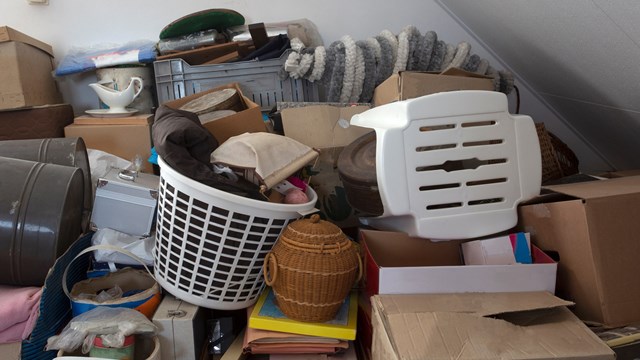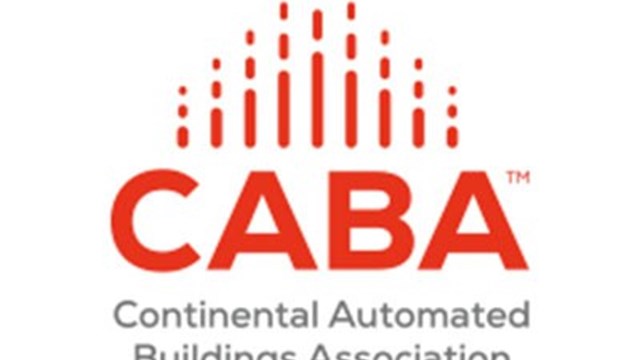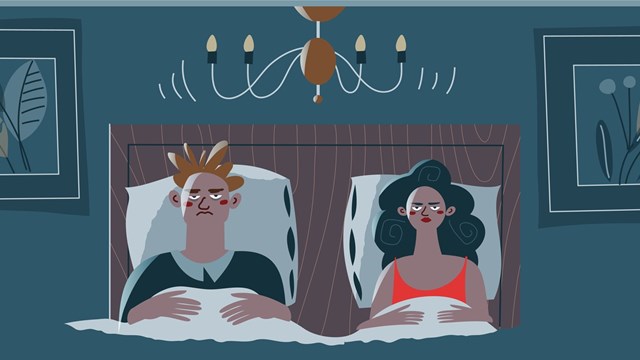In multifamily buildings that hundreds —maybe even thousands—of people call home, it comes as no surprise that unpleasant smells can become an absolute nuisance. The airways that run through the building, the chutes and areas that house the building’s garbage, and the habits of of residents can all be likely culprits when it comes to a not-so-fresh indoor environment. Cooking, cleaning, dusting, or even simply breathing are common contributors to pervasive odor issues. And it’s not just about unpleasant odors - allergens and pathogens can also build up in vents and ducts, and in the worst case scenario, contribute to some very real health problems.
So it’s of the utmost importance that building managers, staff members, and residents do what they can to keep their buildings fresh and everybody breathing easier. For boards, it is imperative that complaints be followed up with action and that maintenance be addressed and carried out.
Pinpoint the Cause
First off, it’s worth mentioning that what’s considered stinky is extremely subjective. What causes one person to gag may not even register with someone else. There is also a condition called anosmia, or ‘smell-blindness’ that most of us experience at one time or another. It’s characterized by our olfactory senses registering even strong or rank smells as unobjectionable or non-threatening, usually thanks to extended exposure to the odor. Ever have someone stroll into your home, only for them to notice a smell you weren’t privy to? That’s anosmia – and it can become a real problem in densely-populated buildings where neighbors are literally stacked on top of one another, sharing common air-ducts and ventilation systems.
Fortunately, there are professionals who specialize in pinpointing problem odors and suppressing or eliminating them. In addition, there are also tools that can can effectively measure the offensiveness of smells. The amazingly-named Nasal Ranger is what is known as a field olfactometer, a device that in the hands of a trained pro, can measure the relative strength of odors. This device does away with the subjectivity of smells and gives a universal standard of the strength of odors. Field olfactometers are especially useful in targeting smells with sources that aren’t readily obvious. The device can also quantitatively determine if a smell qualifies as a nuisance, assigning a number value to the odor based on a set of standard metrics, with anything above a ‘15’ is considered a nuisance. When an odor is bad enough to be considered a nuisance, it can also become a legal matter – both for the parties causing it, and those suffering from it.
Whodunnit?
The smell of pets, cooking, and secondhand smoke reign supreme as some of the top odor-related complaints in multifamily buildings and associations. A chain-smoking downstairs or next-door neighbor can be extremely difficult to deal with if a building’s ventilation or insulation is poor.
While these are indeed some of the more common offensive smells, there are numerous other possible reasons why the inhabitants of multifamily buildings may find themselves at odds with their neighbors, board/management team, or support staff in a stinky situation. Elements outside the building or community itself could also be contributing to the unpleasant scents you experience. Take for instance the condo in Irwindale, California, where a nearby Sriracha factory was deemed a nuisance by its neighbors because of the constant, very strong smell emitting from it.
Chutes, No Ladders
Most multifamily buildings have a garbage chute running from the top floor all the way to a basement garbage room, where a dumpster or other receptacle is placed to catch residents’ refuse. Usually there’s a hatch door in a small room on each floor of the building down which bagged trash is tossed. Chutes are made of various materials (stainless steel is most common) with different features, depending on a building’s size and needs.
While rules about what can and cannot be thrown into garbage chutes are usually outlined in the rules and regulations of a building or HOA, obviously not everyone in a community will abide by those rules. Throwing unbagged, wet, or especially gross garbage down a chute in violation of house rules can cause the chute to become blocked, resulting in a backup of trash piling up behind the blockage; throwing unbagged garbage causes organic and other materials to splatter the sides of the chute, coating the entire length in a layer of slimy, stinky crud that can attract pests and make the whole floor – or even the whole building – smell like a landfill. So in addition to stressing to residents the importance of adhering to rules and regulations about how garbage should be disposed of, garbage chutes need regular attention and maintenance to keep them clear and clean-smelling. If management, staff, and residents stay on top of their game and bring in professionals as needed to clean and sanitize the building’s chutes, bugs and odors can be avoided.
Circulation and Maintenance
If a building—or just one floor of a building – is afflicted with an odor problem, solving the issue may be as simple as having a word with a resident about their pet or smoking habits. Other times, erasing a smell requires a bit more effort. Perhaps certain areas of a particular unit need a bit more caulk to seal it off from neighboring units, for example.
Building managers, those on staff, and if it applies, board members have a duty to ensure clean and fresh air for all who reside in the building. If the building is not doing anything in the way of improving air quality in the first place, an odor issue is not a resident’s fault—even if they’re sauteing mushrooms seven days a week. HVAC systems and their role in maintaining the air quality in a building have a huge impact on the health and morale of those who call that building home. According to Maria Vizzi, president of Indoor Environmental Solutions (IES) in New York, “It depends what type of air system the building has installed. Having said that, if an air system is working well, then ideally it will help transport the odors coming from the kitchens, bathrooms or common areas outside, and exchange air will have an opportunity to replace it. If the air system is not working due to a multitude of possible reasons – such as obstruction of airflow in the duct/riser – really bad, offensive smells coming from cooking, bathroom, or even the trash in the compactor room become trapped inside the building. The air system really helps to improve quality of life in a multi-unit building.”
According in indoor environment pros, just because you recognize a smell as offensive does not mean it will be easy to locate – and just because a smell has been easily located doesn’t mean that the fix is simple. Indeed, some smell sources are hidden, making their erasure a bit more challenging. These invisible odor-makers can include mold inside walls or flooring, pest infestation, exhaust or other outside smells making their way indoors (remember the sriracha factory from earlier).
When mold infests the interstitial spaces in a building, and grimy trash chutes become petri dishes of bacteria and grime, a poorly maintained HVAC system can make a bad situation much worse by spreading all that ick throughout a building. Some kinds of mold have the potential to cause serious negative reactions in humans and pets after long exposure – everything from allergic reactions to skin irritation, respiratory distress, even behavioral issues – and obviously nobody wants to breathe in garbage germs and airborne particles of pest waste.
According to Vizzi, high efficiency particulate air (HEPA) filters will not perform at capacity with a poorly maintained system, so “The rooftop motors should be maintained, and strong enough to draw up the air from the building’s kitchen, bath, and common areas such as hallways. If the motors are broken or not working to the capacity needed for the building’s size, it contributes to the poor indoor air quality. Sometimes it’s as simple as a belt replacement to enable the motor/fan to work well again. Sometimes a rooftop fan isn’t strong enough, and needs to be upgraded to reach the lower floors as well as the penthouse. Cleaning of the building’s air ventilation is always helpful to remove accumulated debris and allow the air system to circulate improved indoor air.”
Evicting the Stench
When Vizzi’s company receives complaints of stale air, they will put a camera down into the ductwork to see if there is a blockage or obstruction. “We find interesting things in the ductwork,” Vizzi says. “Sometimes someone will have done a renovation and there are materials in the ducts or debris will have fallen into the system.”
And sometimes, the line is blocked completely by renovation. Vizzi says they will put a camera down the line and discover that there is now a wall where the vent once was. “Respect the ducts,” Vizzi says. “There’s not always a lot of understanding on why the duct is there in the kitchen or bathroom. But it impacts that apartment and everyone on that line. It’s important to be conscientious of your neighbors.”
According to Mark Drozdov, senior vice president and technical director for Creative Environment Solutions (CES) Corp., in New York, in order to see the full picture of your building’s air quality, “You need to perform a full indoor air quality assessment, including testing for humidity, air flow, mold, and volatile organic compounds, or VOCs.” VOCs can be found in paints, varnishes, wax, fuels and household products and can be released when they are in use or, to some degree, when they are stored.
The search for airborne irritants and allergens can be measured “using BioCassettes and air sampling equipment for mold,” says Drozdov. Respirable dust monitors and photo ionization detectors can paint the picture for general indoor air quality. “We would recommend that this testing be done by professionals only to prevent misinterpretations of data that could lead to wrong decisions,” he adds.
Because construction can play such a big role in air quality, it is imperative that those projects be monitored and that everyone involved understands and agrees on how to manage the use of chemicals and construction materials. For example, “only use water-based polyurethane for floors,” says Doug Weinstein, vice president of Property Management Group, which has offices in New York City and in Florida. “Otherwise, VOCs can get released into the air. Work with your construction team to make sure they’re using products with the least amount of VOCs.”
The same caution should be applied to the chemicals used in cleaning and building maintenance. “Make sure that the material safety data sheets are on hand, which outline the uses for chemicals and shows what kind of ventilation is necessary,” adds Weinstein.
All indoor environment pros agree that regular inspections and maintenance of building equipment and systems also ensures that residents and building staff are enjoying good air quality. When verifying proper operation of ventilation and other air-related equipment, the general consensus is that these systems – as well as outdoor air intakes – should be looked at four times a year to check that items such as fans and belts are functioning smoothly.
“With air quality, a lot of it is cleanliness of equipment,” says Weinstein. “Make sure the filters are changed and the machines are working optimally. Do a periodic cleaning of the ventilation shafts. Put it on a regular schedule.”
Ultimately, good air quality equates to good quality of life. Proper maintenance and diligence can ensure that everyone gets a chance to breathe easier.
Oba Gathing is a freelance writer and regular contributor to The Cooperator.










3 Comments
Leave a Comment